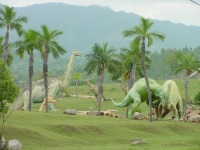
The large park region, which is a World Heritage Biosphere Reserve, is filled with attractions, including wildlife refuges and coffee plantations. It is possible to climb 459 stone steps to the summit of the huge rock, La Gran Piedra, and stand 4,049ft (1,234m) above sea level for a beautiful view. It is said that on a dark night, one can see the lights of Jamaica in the distance.The park boasts extremely varied attractions and their relation to a general theme is not always obvious but there is an attempt to move chronologically through history beginning with the prehistoric and ending with the Cuban revolution. In the Valle de la Prehistoria visitors are awed by dozens of life-size model dinosaurs and other prehistoric creatures lurking in lush vegetation.There is also a magnificent 45-hectare (111-acre) garden, the Jardin Ave de Paraiso, dating from 1860, that was laid out on a former coffee plantation and features a series of colour-coded gardens with unique scents and displays in each. An artistic community consisting of 10 families have formed a fieldstone hamlet, offering artwork of a high standard at Comunidad Artistas Oasis.There is also an Auto Museum, an aquarium, and multiple museums dedicated to Cuban history and the revolution. This is the area from which Castro planned the July 26th movement and it is of huge national importance to the Cubans. At Baconao Park there really is something for everyone.
Address : Poblado de Siboney
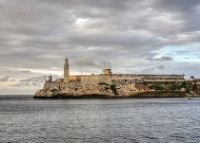
Santiago's most impressive structure is poised ominously atop the cliffs at the narrow entrance to Santiago Bay, about nine miles (14km) south of Santiago. This enormous piece of military architecture, a maze of stairways and dungeons, was begun in 1640 and was originally built to defend the bay from pirates and naval attack.The Morro was rebuilt in 1664 after the English pirate, Henry Morgan, reduced it to rubble. At one stage in its long history the castle was also used as a prison before being converted once again into a military fortress. The castle now houses the Museum of Piracy, featuring excellent displays on piracy, colonialism and slavery. There are old blunderbusses, muskets, cutlasses and Toldeo blades in glass cases.The Morro is one of the best-preserved 17th-century Spanish fortresses in the world and it has been declared a UNESCO World Heritage Site. There are amazing views from all over the fortress and many enviable photo opportunities. There is also a restaurant on the terrace. The Morro is a fascinating place to explore and visitors to Santiago are encouraged not to pass this attraction up.
Address : Six miles (10 km) southwest of the city centre, near the bay
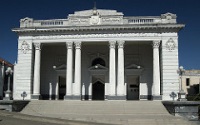
Bacardi, the world's largest family-owned spirits company, started producing rum in Santiago way back in 1862. The family was forced to flee Cuba after the revolution in 1959, and Bacardi drinks are not found in Cuba today, but the brand still strongly associates itself with the country.Interestingly, it was the fruit bats that nested in the rafters of the original rum factory that gave Bacardi rum its world-famous bat logo. The company's current production sales exceed 240 million bottles a year, in about 170 countries.Emilio Bacardi's private art and antique collection is still in Santiago, as is the original family rum distillery, and it is this collection that you can view in the Emilio Bacardi Moreau Museum. It is not a rum museum or a distillery tour but an eccentric collection of the famous family's historical artefacts and art.A fun and educational outing, the Emilio Bacardi Moreau Museum is well worth a visit when in Santiago. Budget at least an hour to take in all the sights the museum has to offer. Those who want to take photographs in the museum must ask permission and pay an additional fee.
Address : Calle Pio Rosado No. 552 e/Aguilera y Heredia
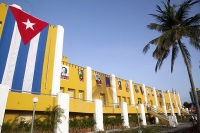
If you are interested in the history of the revolution then visiting Moncada Barracks is something you must do in Cuba. The bullet-ridden Moncada Barracks and adjacent Parque Historico Abel Santamaria were the setting for very important events in Cuba's history.In 1953, a group led by Fidel Castro attacked the barracks in an attempt to steal weapons and launch the revolution, but the plan failed and 61 of them were killed. The rest were captured and many tortured to death by Batista's army. Castro himself was later tried in the Escuela de Enfermeras for leading the attack, and this is when he wrote his famous 'History Will Absolve Me' speech.This failed attack is widely considered to mark the beginning of the Cuban revolution and the date of the attack, 26 July, was adopted by Castro as the name for his revolutionary movement (Movimiento 26 Julio) which succeeded in overthrowing Batista's dictatorship in 1959. The barracks was converted into a school after the revolution and in 1978 the perimeter walls were rebuilt and half of the building became a museum.
Address : Avenida Moncada
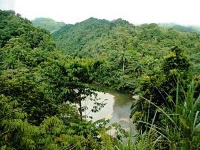
This UNESCO World Heritage Site is located in the Cuban provinces of Holguín and Guantánamo, and features an impressive selection of flora and fauna, such as parrots, lizards and hummingbirds, which are unique to the area. The amount of endemic species in the park has made it one of the most valuable areas in the world for research and conservation.The area is said to be the most humid place in Cuba and this, in addition to the incredibly varied topography, may well be a factor in encouraging the diversity of species. The region has seen very little habitation by humankind and it remains a remarkably unspoiled wilderness area. In fact, it is widely hailed as the most important nature reserve in the Caribbean.The well-visited park is a firm favourite among young travellers to Cuba, and regularly features on lists of the best things to do with kids while in the country. It should appeal to all ages: who can resist pristine waterfalls and stunning natural rock pools to swim in? A guide is compulsory when touring the reserve. Although it is a few hours from Santiago de Cuba by bus or car to this incredible park it is a worthwhile excursion and makes for a wonderful weekend getaway.
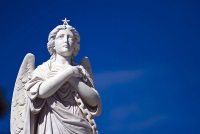
Santa Ifigenia Cemetery was officially founded in 1868 - although some of its graves are older - and declared a National Monument in 1937. It now shelters a number of important historical and cultural figures including war heroes and famous politicians and artists.The gateway to this cemetery is dominated by a memorial to Cuban soldiers who died fighting in Angola. From here, the visitor is led to the impressive tomb of Cuban national hero, revolutionary and writer Jose Marti. The tomb is in the form of a crenulated hexagonal tower with each side representing one of Cuba's six original provinces. The round mausoleum is designed so that the sun will always shine on Marti's casket, which is draped with the Cuban flag.The cemetery also contains a shrine to the Virgin of Charity, Cuba's patron saint, in the form of the Basilica del Cobre. This little church is said to be the scene of miracles performed by the saint. It is a very attractive cemetery with a number of impressive and quite original tombs and strolling around it is intriguing; a lot can be learned about a culture from the way they commemorate their dead.
Address : Av Crombet

Travel Guide powered by Word Travels, copyright © 2023 Globe Media Ltd. By its very nature information in this travel guide is subject to change at short notice and travellers are urged to verify information on which they're relying with the relevant authorities. Neither Globe Media Ltd nor Travel Vogue can accept any responsibility for any loss or inconvenience to any person as a result of information contained above.